
Here are a few more shots of the veery I encountered on a recent walk in New England. Here is the original For the Birds post.




Here are a few more shots of the veery I encountered on a recent walk in New England. Here is the original For the Birds post.


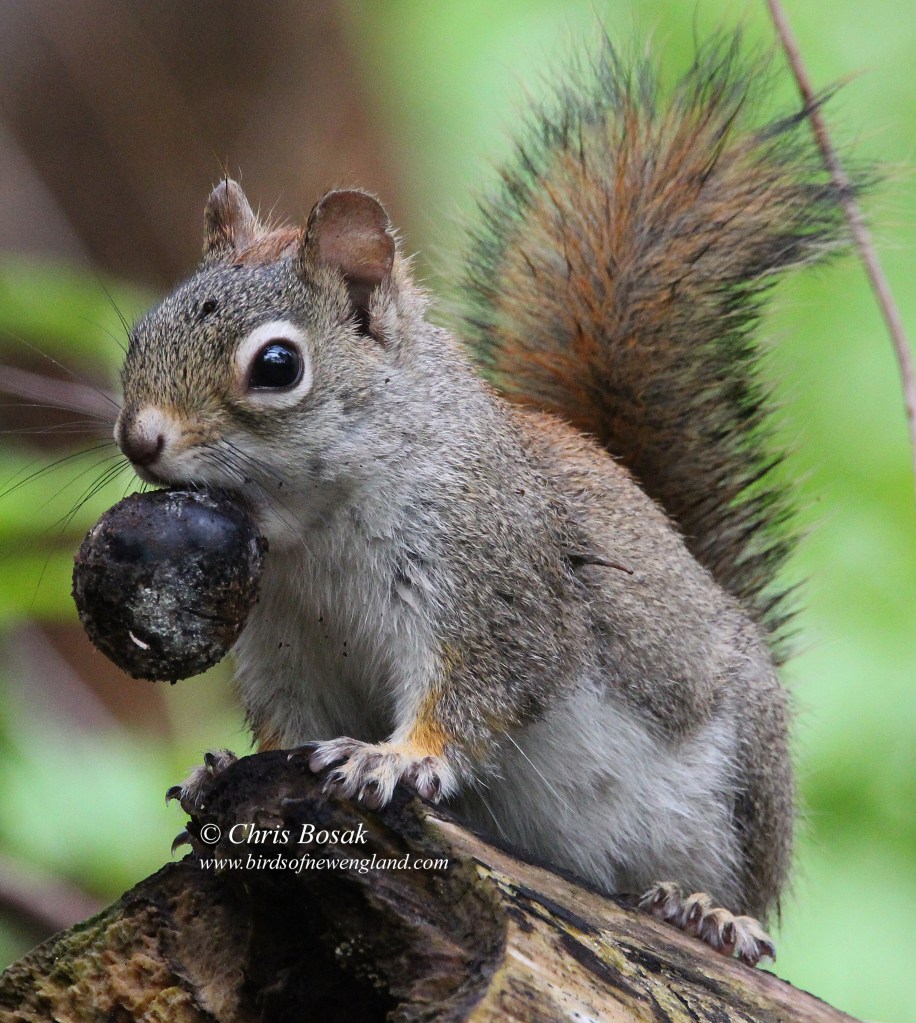
Birds aren’t the only animals you encounter during walks in the woods in New England. Squirrels, including red and gray, are a common “incidental” sightings.
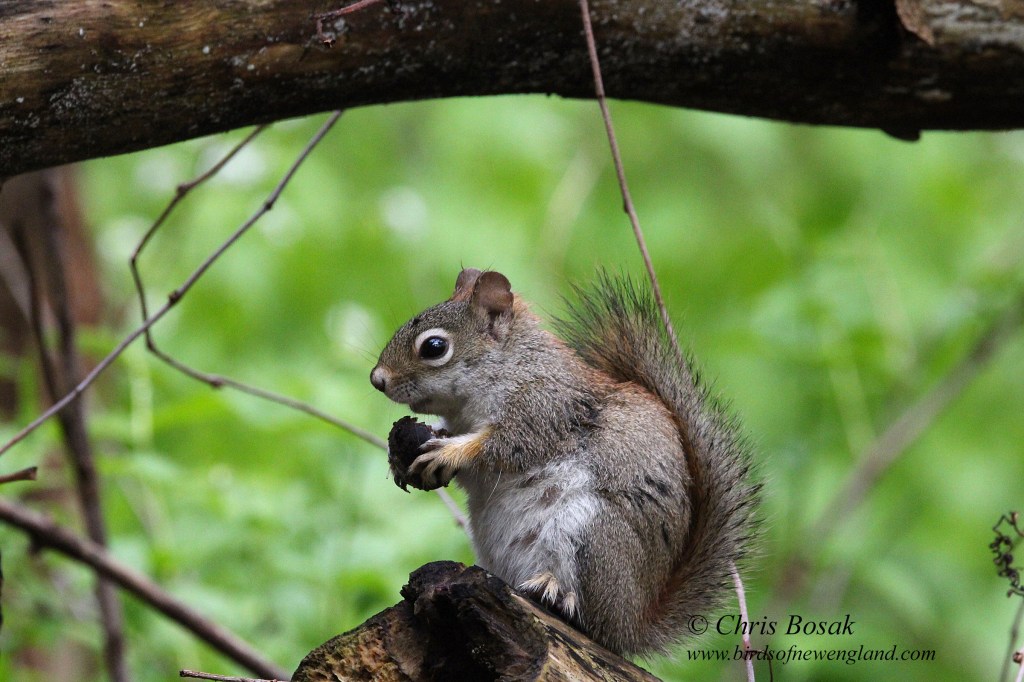
Photo by Chris Bosak – A squirrel finds a meal in New England, May 2024.
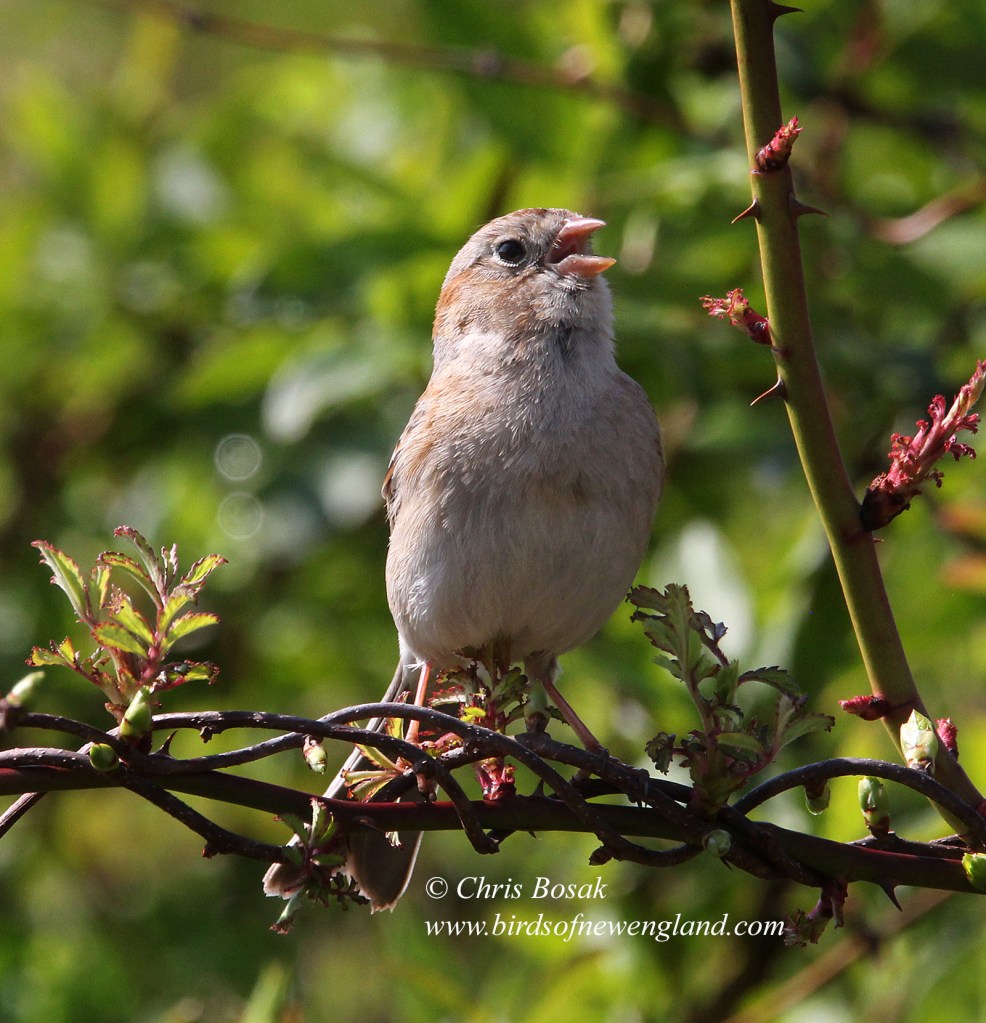
Note: This article was originally published in early May and the story is based on a walk taken on April 29.
It was one of those “quick walks” that ended up being a three-hour birding journey.
I hit the trail shortly after sunrise and was immediately greeted by the awesome cacophony of bird sounds that can only happen during spring migration. The loud voices of cardinals, robins, and Carolina wrens were the dominant sounds. American crows cawed in the distance and red-winged blackbirds belted out their “conk-a-ree” songs from a nearby field. That was all good stuff, of course, but the real auditory treats came from birds with less conspicuous songs.
The softer calls of field sparrows and savannah sparrows emanated from the field, and a high-pitched, nearly inaudible, song came from the top of a maple tree near the parking lot.
It was a warbler, but which one? Since it was the beginning of spring migration and my warbler song identification skills are rusty, it took me a few seconds to realize it was a prairie warbler singing up there.
I hadn’t even gotten out of the parking lot yet, and my excitement for the walk grew. I took the immediate warbler sighting as a sign that the previous night had been a good one for migration, and it was going to be a bird-filled walk. Fast forward about three hours into my “quick walk,” and my gut feeling turned out to be right. It wasn’t necessarily a warbler-fest, but the variety of birds I saw made it one of those walks that I will remember for a long time.
Sparrows are quickly becoming one of my favorite bird families to watch and this walk featured several of these fascinating birds. White-throated sparrows remain the dominant species. I always enjoy seeing white-throated sparrows in the spring when they are in their bright, fresh breeding plumage. The white on their throats and heads and their yellow lores (area between bill and eye on side of head) really pop this time of year.
Field sparrows have a certain understated elegance about them as they are not flashy, but still attractive birds. Savannah sparrows, similar to white-throated sparrows, are particularly vibrant in the spring and the yellow stripes above their eyes really shine this time of year. Later in the walk, as I approached a pond and adjoining swamp, I noticed a shy swamp sparrow lurking in its namesake habitat. I also saw a chipping sparrow collecting straw for a nest during the walk.
I wrote a few weeks ago about the joys of spring vernal pools and highlighted the frogs and other such critters that may be found there. This walk took me past a shallow vernal pool that had two Louisiana waterthrushes bopping around looking for morsels to pull out of the muck. Louisiana waterthrushes are really warblers, even though they look like thrushes and don’t act like your “typical warbler.” They may be found on the ground near shallow pools or even streams scuttling around and making birders wonder whether they are looking at a Louisiana waterthrush or a northern waterthrush. Those species each migrate through New England and look nearly identical with a few subtle differences to tell them apart.
Some of the larger songbirds had returned overnight as well. I heard and then eventually spotted a Baltimore oriole among the treetops near the swamp. It always amazes me that a bird as big and bright as a Baltimore oriole could be so difficult to find among the leaves at the top of trees.
While on a trail with thick brush on either side, I heard the long, varying song of the rose-breasted grosbeak. That same trail also featured several blue-winged warblers. They gave away their whereabouts with their insect-like song before popping up out of the brush to offer a look at their yellow plumage and black, bandit-like eye stripe.
At the end of the walk, I had more than 40 species on my eBird list. It was a great day to kick off the full-blown spring migration period, and I look forward to more “quick walks” as the season progresses.

Well, it’s April and that means we are awaiting the arrival of warblers. It also means taking lots of photos of eastern towhees while we wait. Here are a few of this year’s shots. Their large size and awesome coloration belie the fact that towhees are members of the sparrow family.
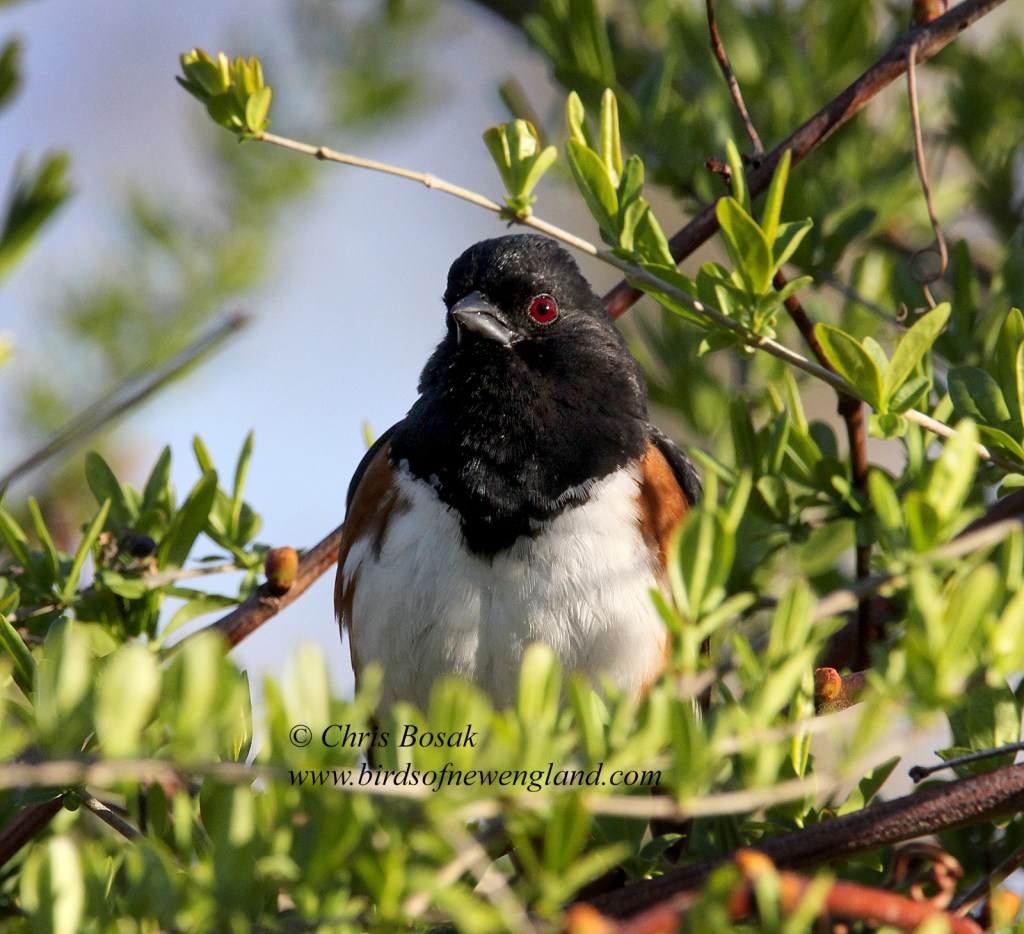
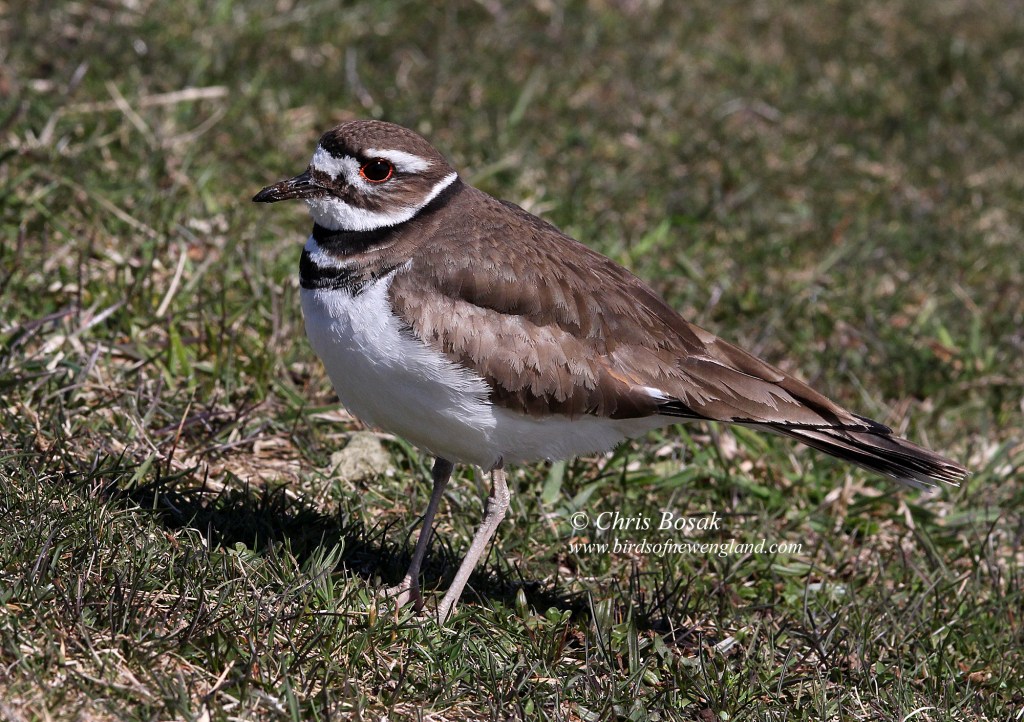
Just a few random shots of birds I saw last month. Spring migration is upon us and gaining speed every day. Be sure to be out there to enjoy the show.


It may not be the most technically sound bird photo (none of mine are really), but I kind of like the composition. Song sparrow.

What started out as a bird walk eventually morphed into a different type of nature walk.
I figured I would head to the nearby park a week before the official start of spring to see if any early spring birds had arrived. My main target, as always in mid-March, was American woodcock. As always, I came up empty in that department.
Other birds were scarce as well. The winter ducks had presumably left the ponds for points north. No other spring birds had arrived yet, at least not that I saw that day. I know that eastern phoebes are around right now, and the other day through my window at work I saw a yellow-rumped warbler. But there was no such luck on this walk.
Continue reading
Here are a few more shots of the white-throated sparrow eating crabapples from last month. Here is the original column with the full story.
Continue reading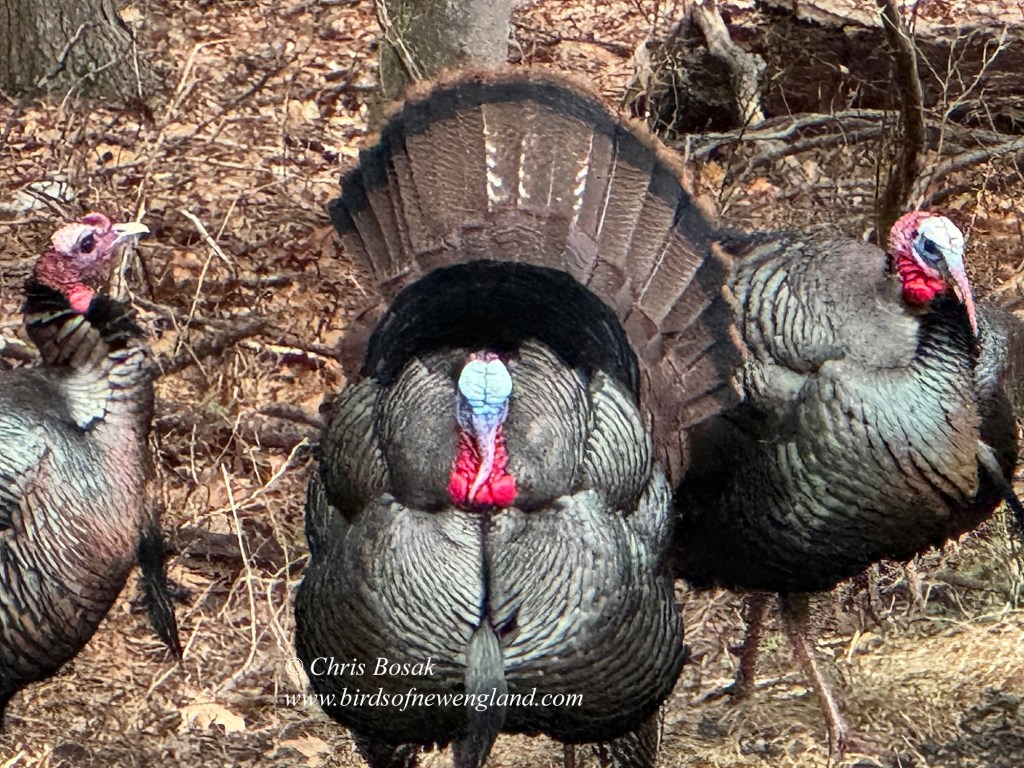
Perhaps against my better judgment, I am going to move forward with an early signs of spring column.
Even as nearly a foot of snow fell in my area a few short days ago, signs of spring are out there. They may not abound yet, but they are out there.
It started a little over a week ago with one of the typical first signs of spring: snowdrops poking out of the ground and flashing their little white flowers. A day or two later, a flock of turkeys walked past my window at work. It was a good-sized flock of about 15 to 20 birds, and, of course, I had to leave my work area temporarily to check out the action.
As I stepped out of a door a fair distance away from the turkeys so as to not disturb their day, I noticed that several of the males were displaying. No matter how many times you’ve seen it before, it is always an impressive sight to see turkeys displaying. They are large birds to begin with, so when their feathers are displayed to intimidate or impress, the birds appear to be that much larger.
Continue reading